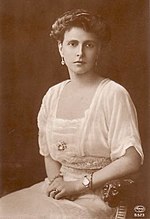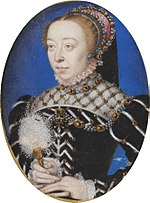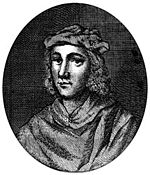Featured biography 1
Portal:Monarchy/Featured biography/1
Alexander (1893–1920) was King of Greece from 11 June 1917 until his death at the age of 27. He succeeded his father, King Constantine I, in 1917, after the Entente Powers of World War I and followers of Eleftherios Venizelos pushed the king and his eldest son Crown Prince George into exile. Venizelos, as prime minister, became the effective ruler with the support of the Entente. Though reduced to the status of a puppet king, Alexander supported Greek troops during their war against the Ottoman Empire and Bulgaria. Under his reign, Greece expanded, following the victory of the Entente and the early stages of the Greco-Turkish War of 1919–1922. Alexander married the commoner Aspasia Manos in 1919, provoking a major scandal that forced the couple to leave Greece for several months. Soon after returning to Greece with his wife, Alexander was bitten by a domestic Barbary macaque and died of septicemia. The sudden death of the sovereign contributed to the fall of the Venizelist regime. After a general election and a referendum, Constantine I was restored.
Featured biography 2
Portal:Monarchy/Featured biography/2
Princess Alice of Battenberg (1885–1969) was the mother of Prince Philip, Duke of Edinburgh (consort of Queen Elizabeth II). Congenitally deaf, she grew up in Germany, England and the Mediterranean. After marrying Prince Andrew of Greece and Denmark in 1903, she lived in Greece until the exile of most of the Greek Royal Family in 1917. On returning to Greece a few years later, her husband was blamed in part for the defeat of Greece in the Greco–Turkish War of 1919–1922, and the family were once again forced into exile until the restoration of the Greek monarchy in 1935. In 1930, she was diagnosed with schizophrenia and committed to a sanatorium; thereafter, she lived separately from her husband. After her recovery, she devoted most of her remaining years to charity work in Greece. She stayed in Athens during the Second World War, sheltering Jewish refugees, for which she is recognised as "Righteous Among the Nations" at Yad Vashem. After the war, she stayed in Greece and founded an Orthodox nursing order of nuns known as the Christian Sisterhood of Martha and Mary. After the fall of King Constantine II of Greece and the imposition of military rule in Greece in 1967, she was invited by her son and daughter-in-law to live at Buckingham Palace in London, where she died two years later
Featured biography 3
Portal:Monarchy/Featured biography/3
Grand Duchess Anastasia Nikolaevna of Russia (18 June 1901 – 17 July 1918) was the youngest daughter of Tsar Nicholas II, the last sovereign of Imperial Russia, and his wife, Tsarina Alexandra Feodorovna. She was murdered with her family by members of the Cheka, the Bolshevik secret police. The location of her burial was unknown during the decades of Communist rule, and rumors that she had escaped circulated after her death. A mass grave near Yekaterinburg which held the remains of the Tsar, his wife, and three of their daughters was revealed in 1991, and the bodies of the remaining daughter and the Tsarevitch Alexei were discovered in 2007. Forensic analysis and DNA testing have confirmed that the remains are those of the imperial family, showing that Anastasia and the other grand duchesses were killed in 1918. Several women have claimed to be Anastasia, including Anna Anderson, who died in 1984, but DNA testing in 1994 showed that she was not related to the Romanov family.
Featured biography 4
Portal:Monarchy/Featured biography/4
Catherine de' Medici (1519–1589) was queen consort of King Henry II of France from 1547 to 1559. Throughout Henry II's reign, he excluded Catherine from influence and instead showered favours on his mistress, Diane de Poitiers. Henry's death in 1559 thrust Catherine into the political arena as mother of the frail fifteen-year-old King Francis II. When he died in 1560, she became regent on behalf of her ten-year-old son King Charles IX and was granted sweeping powers. After Charles died in 1574, Catherine played a key role in the reign of her third son, Henry III. He dispensed with her advice only in the last months of her life. Catherine's three sons reigned in an age of almost constant civil and religious war in France. The problems facing the monarchy were complex and daunting. At first, Catherine compromised and made concessions to the rebelling Protestants, or Huguenots, as they became known. Later, she resorted in frustration and anger to hard-line policies against them. Her policies may be seen as desperate measures to keep the Valois monarchy on the throne at all costs, and her spectacular patronage of the arts as an attempt to glorify a monarchy whose prestige was in steep decline. Without Catherine, it is unlikely that her sons would have remained in power. The years in which they reigned have been called "the age of Catherine de' Medici".
Featured biography 5
Portal:Monarchy/Featured biography/5
Constantine II of Scotland was an early King of Scotland, known then by the Gaelic name Alba. His reign, like those of his predecessors, was dominated by the actions of Viking rulers in Britain and Ireland, particularly the Uí Ímair. During Constantine's reign, the rulers of the southern kingdoms of Wessex and Mercia, later the kingdom of England, extended their authority northwards into the disputed kingdoms of Northumbria. At first allied with the southern rulers against the Vikings, Constantine in time came into conflict with them. King Æthelstan secured Constantine's submission in 927 and 934, but the two again fought when Constantine, allied with the Strathclyde Britons and the Viking king of Dublin, invaded Æthelstan's kingdom in 937, only to be defeated at the great battle of Brunanburh. In 943 Constantine abdicated the throne and retired to the Céli Dé monastery of St Andrews where he died in 952. His reign of 43 years, exceeded in Scotland only by that of King William the Lion before the Union of the Crowns in 1603, is believed to have played a defining part in the gaelicisation of Pictland in which his patronage of the Irish Céli Dé monastic reformers was a significant factor. During his reign the words "Scots" and "Scotland" (Old English: Scottas, Scotland) were first used to mean part of what is now Scotland.
Featured biography 6
Featured biography 7
Featured biography 8
Featured biography 9
Featured biography 10
Featured biography 11
Featured biography 12
Featured biography 13
Featured biography 14
Featured biography 15
Usage
The layout design for these subpages is at Portal:Monarchy/Featured biography/Layout.
- Add a new Featured biography to the next available subpage.
- Update "max=" to new total for its {{Random portal component}} on the main page.
Additions
Feel free to add Monarchy related articles Featured articles to the above list. Other related articles may be nominated here.




